Managing Centers: Centers for Remedial Math Students
When thinking about how to manage centers, it is important to think of Guided Math like Guided Reading. Do you change your center stations every day or do you keep the same ones in all week? Do you differentiate every single center for each group? These are steps you can take to minimize your work as you are getting started with Guided Math. Over the years, I have added different differentiated centers every once in a while to meet the needs of my students. To help my students who need additional remedial help or enrichment practice, I place two extra bins on the shelf. To distinguish between the two groups, I use two different colors. I tell the groups of students with remedial needs or enrichment needs to either work on something in their colored bin first before going to centers or visa versa. Ultimately, this provides support and activities in centers for remedial math students.
No student is “bad” at math!- Centers for Remedial Math Students

On the first day of school I talk about having a growth mindset. Instead of saying “I am bad at …” or “I can’t do it” we say something positive. My students discuss other ways of saying things in a positive way such as “this is hard but I am excited for the challenge”. We read the book Beautiful Oops. We talk more about growth mindset and seeing the beauty even in our mistakes. Class Dojo has some great videos too. I have also included a TED talk to teacher understand growth mindset and its importance. No Student is bad at math because everyone is capable of learning when we provide the tools to help them. Therefore, we as teachers need to find ways to help these students build fundamental math skills and help fill in any missing gaps.
Centers for Remedial Math Students: What to do with students who need remedial support?
In my differentiated bins, I have a variety of hands-on engaging activities to work with my remedial math students in developing their math skills. Some concepts you might be working with might include 1 to 1 correlation, number ID, Number order, patterns, and basic addition or subtraction. Hopefully, these examples will help you build centers that help with remedial math skills because they provide basic math skill examples for students struggling with remedial math. Below I have provided a list of examples of centers for students showing remedial math skills with math concepts.
Examples of ideas for remedial math centers for K-2
1 to 1 Correlation and Number ID
- Number cards with dots: Students can either work on tracing the number or they can place that number of pom poms on the dots.
-
Games that have a number on a card to cut-out and students will place that number of toys, items, food, dots, etc. I use many toys from the dollar store. For example, I created green cut-outs for lilly pads and numbered them 1-10 and then a set 10-20. You can find frogs or other small animals at the dollar store. Students then place the correct number of frogs on the lilly pad. I have done the same with cut-out fish bowls with numbers. Student place Goldfish crackers in the fishbowls.
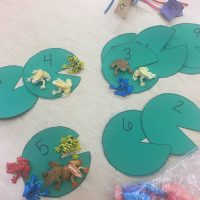
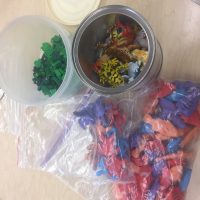
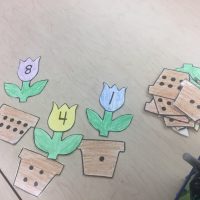
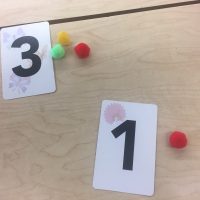
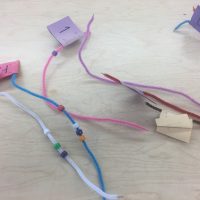
- There are also many games found online that students use clothespins or other items to work on counting and 1:1 correlation.
Number Order
- 100 Chart with activities
- Putting numbers cards with graphics in order
- Puzzles
Patterns
- Pattern block shapes (create their own or match)
- Unifix cubes with patterns already established that the students need to recreate or continue the pattern.Again you can use easy small toys (many found at the dollar store) such as teddy bear maniupatives to continue patterns or create their own.
Basic Addition/subtraction
- Pictures to help with these operations
- Cards with manipulatives to help students make the connections
- Baggies of items to pull out handfuls and add or subtract
- Dice for addition or subtraction
- Dominoes- Students count one side and then the other side and add them together.
Apps online to provide remedial math support

There are many online apps to help students learn these important foundational math skills.
ToDo Math. This app allows you to customize each child’s math learning focus. This is a quick way for students to review important skills before moving onto other activities.
Math Playground You can sort the games based on skills.
Land of Zenn Geometric Defense- This game Incorporates shapes and tangrams
Dragon Shapes Geometry Challenge- This game also incorporates shapes and tangrams
To check out more apps and teacher feedback use www.commonsense.org
Tips of Pre-Tests & Struggling Students
TIP: If a student is showing a low score on the pre-test and many concepts are covered, do NOT try to cover all the concepts on the test at once. In small groups, pick 2-3 most essential concepts of the unit and focus your small group instruction on those. Your student might not get a perfect on the test, but you will have the opportunity to build upon these important skills. Guided math does not stop after a unit test, but it continues throughout the year until a skill is mastered.


